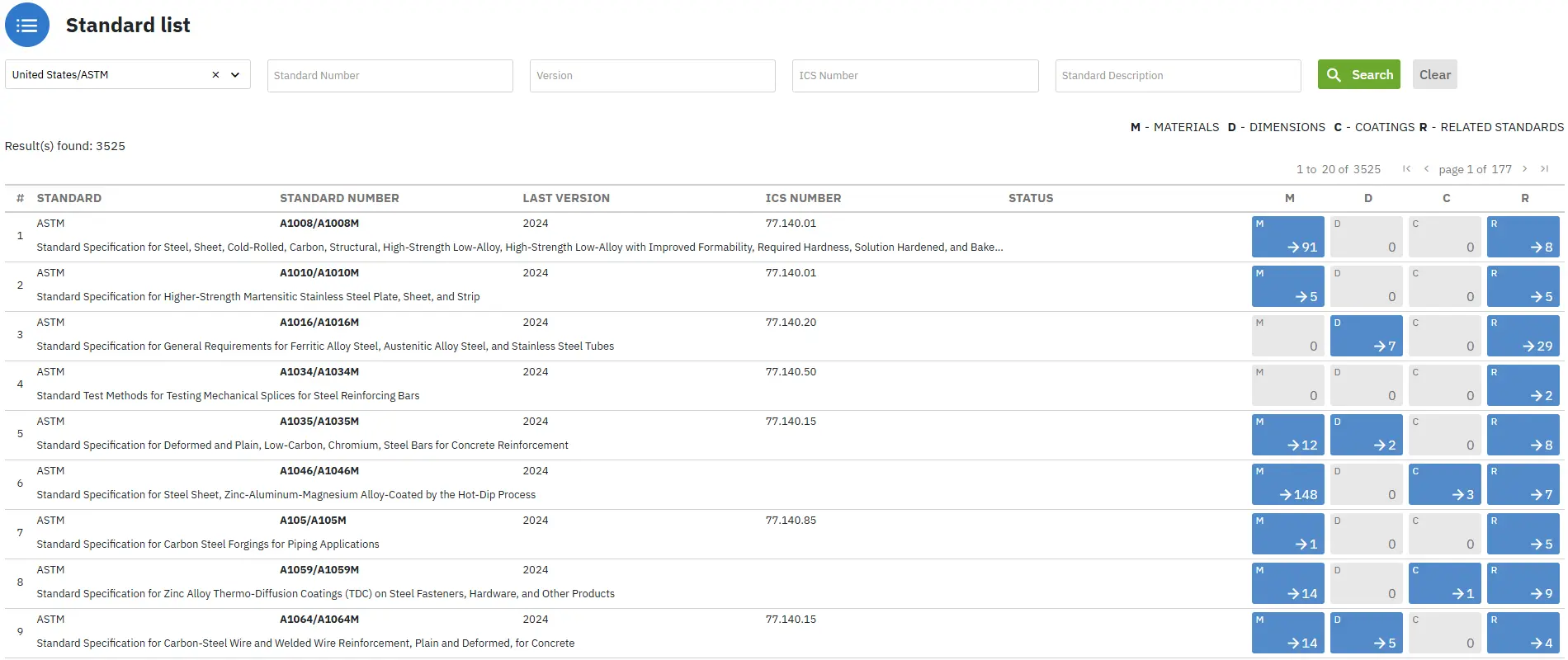Introduction to the ASTM Designation System
Abstract
ASTM specifications represent a consensus among producers, specifiers, fabricators, and users of steel mill products. ASTM’s designation system for metals consists of a letter (A for ferrous materials) followed by an arbitrary sequentially assigned number. These designations often apply to specific products, for example A548 is applicable to cold-heading quality carbon steel wire for tapping or sheet metal screws.
Overview of ASTM Specifications
ASTM specifications represent a consensus among producers, specifiers, fabricators, and users of steel mill products. These standards classify, evaluate, and specify the material, chemical, mechanical, and metallurgical properties of different types of steels used in mechanical components, industrial parts, and construction elements.
ASTM Designation System for Metals
ASTM’s designation system for metals consists of a letter followed by a sequentially assigned number. The letter "A" is used for ferrous materials. Metric ASTM standards have a suffix letter "M".
Example: ASTM A 582/A 582M-95b (2000), Grade 303Se-Free-Machining Stainless Steel Bars
- A: Describes a ferrous metal.
- 582: A sequential number without any relationship to the metal’s properties.
- M: Indicates the standard is written in rationalized SI units.
- 95: Indicates the year of adoption or last revision.
- b: Indicates the third revision of the standard in 1995.
- (2000): Indicates the year of last re-approval.
- Grade 303Se: Indicates the grade of steel with a selenium addition.
Key Uses of ASTM Specifications
ASTM standards are widely used in the steel industry and have often been adopted by the American Society of Mechanical Engineers (ASME) with minimal modifications. ASME uses the prefix "S" followed by the ASTM designation (e.g., ASME-SA213 is identical to ASTM A 213).
Definitions: Grade, Type, and Class
Within the steel industry:
- Grade: Describes chemical composition.
- Type: Defines the deoxidation practice.
- Class: Indicates other characteristics like strength level or surface finish.
However, within ASTM standards, these terms are used more loosely to identify specific metals within a standard.
Example 1: ASTM A 106-02a, Grades A, B, C - Seamless Carbon Steel Pipe for High-Temperature Service
- Grade A: 0.25% C (max), 48 ksi tensile strength (min)
- Grade B: 0.30% C (max), 60 ksi tensile strength (min)
- Grade C: 0.35% C (max), 70 ksi tensile strength (min)
Example 2: ASTM A 276-03, Types 304, 316, 410 - Stainless and Heat Resisting Steel Bars and Shapes
- Types based on the SAE designation system for stainless steels.
ASTM Grade Designators in Pipes, Tubes, and Forgings
Different letters are used for various products:
- P: Pipe
- T: Tube
- TP: Tube or Pipe
- F: Forging
Examples:
- ASTM A 335/A335-03, Grade P22: Seamless Ferritic Alloy-Steel Pipe for High-Temperature Service
- ASTM A 213/A213M-03a, Grade T22: Seamless Ferritic and Austenitic Alloy Steel Boiler, Superheater, and Heat-Exchanger Tubes
- ASTM A 312/A312M-03, Grade TP304: Seamless and Welded Austenitic Stainless Steel Pipe
- ASTM A 336/A336M-03a, Class F22: Steel Forgings, Alloy, for Pressure and High-Temperature Parts
View Groups of ASTM Standards
For detailed information, click on the following links to view groups of ASTM standards:
- Iron, Nickel Alloy/Heat Resistant Nickel Alloys and High Silicon Steel
- Structural and Constructional Steels: Part One
- Structural and Constructional Steels: Part Two
- Structural and Constructional Steels: Part Three
- Structural and Constructional Steels: Part Four
- Structural and Constructional Steels: Part Five
- Stainless Steels
- Castings
- Forgings, Welding and Filler Materials, Powder Metallurgy
- Coated Steels
- Ferro Alloys, Others and Terms/Definitions
- Testing / Determination
Trova e confronta immediatamente le proprietà dei materiali ASTM!
Total Materia Horizon contiene informazioni dettagliate e precise sulle proprietà di migliaia di materiali secondo gli standard ASTM, aggiornate mensilmente.

Ottieni un account di prova GRATUITO su Total Materia Horizon e unisciti a una comunità di oltre 500.000 utenti provenienti da più di 120 paesi.